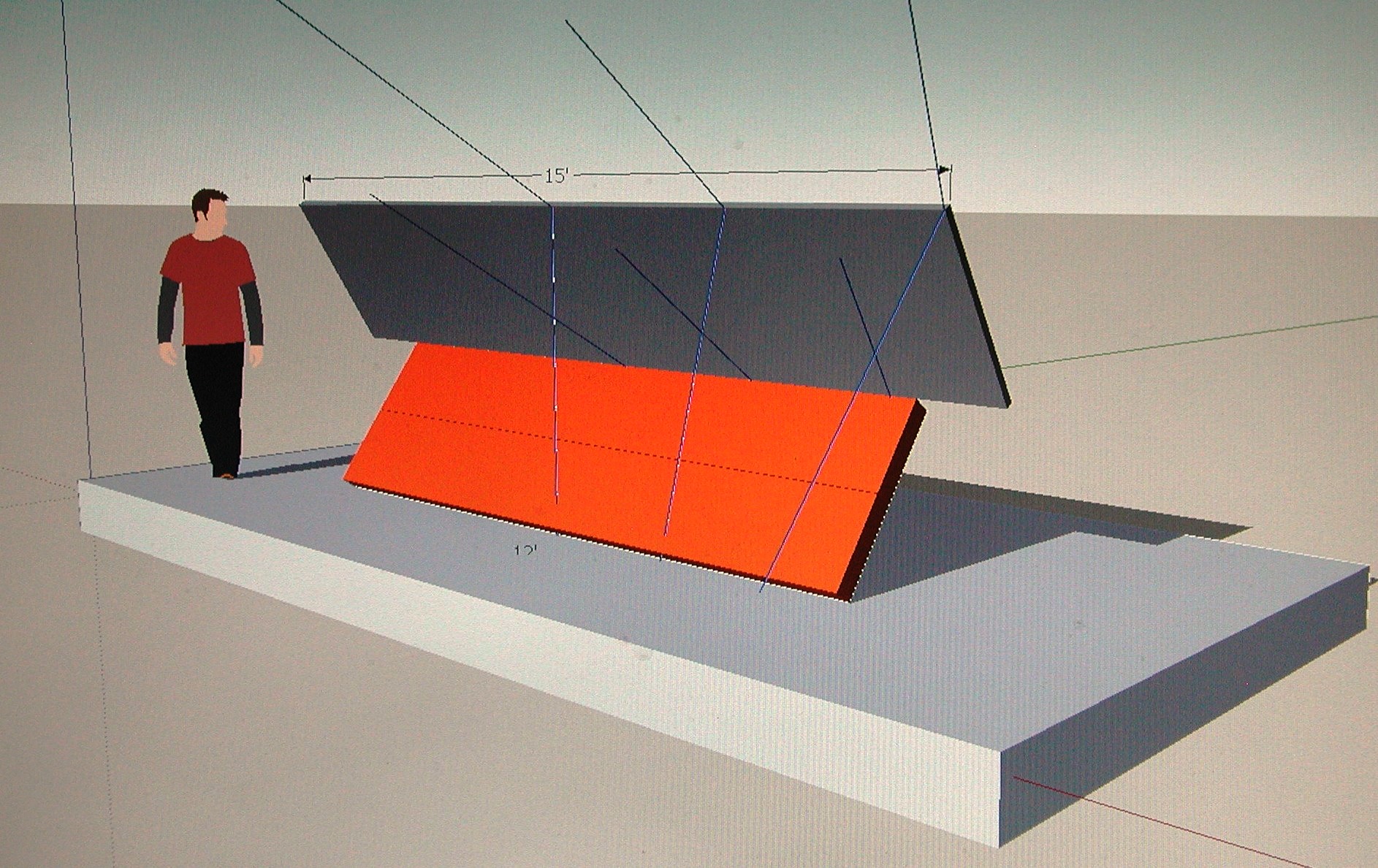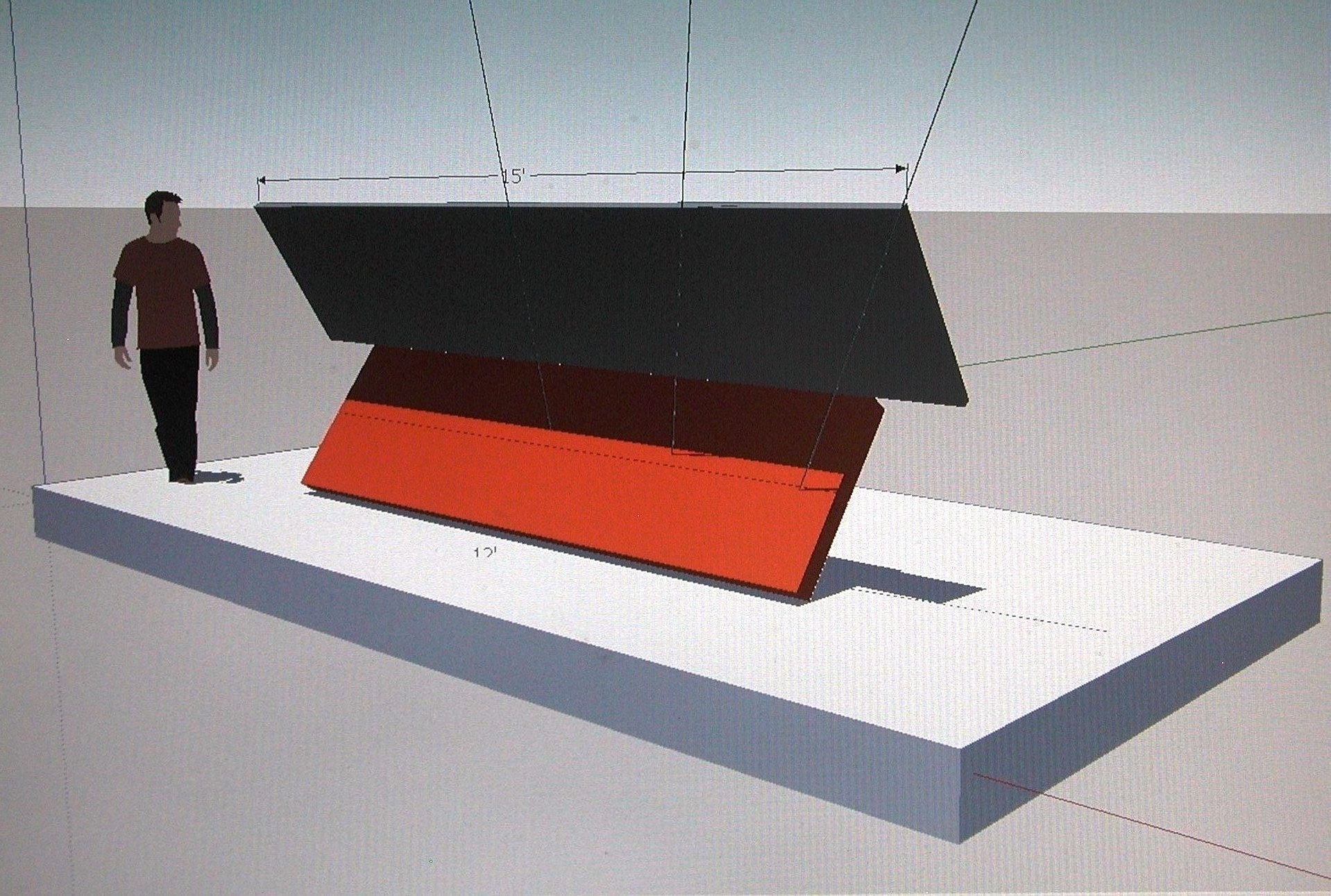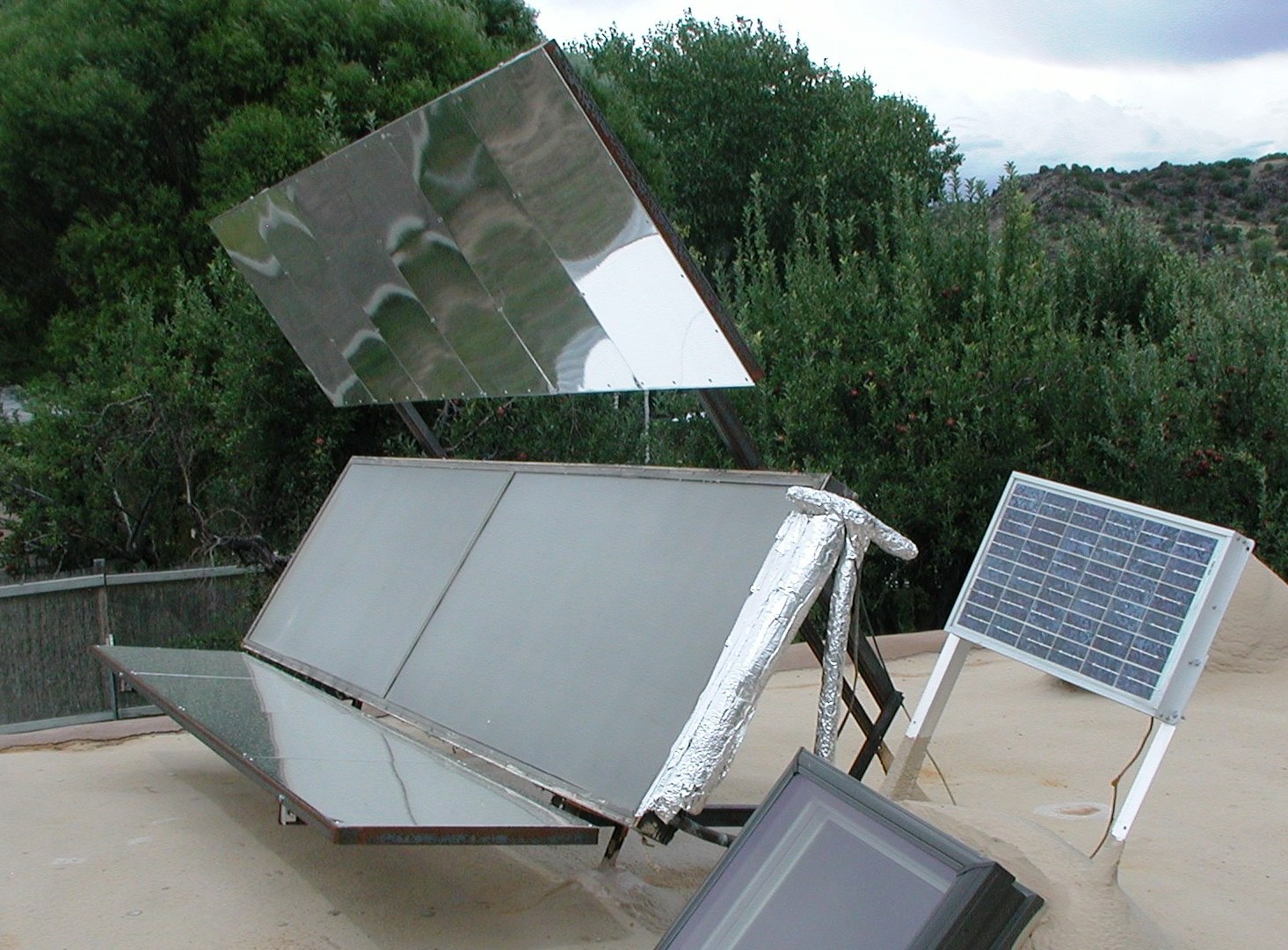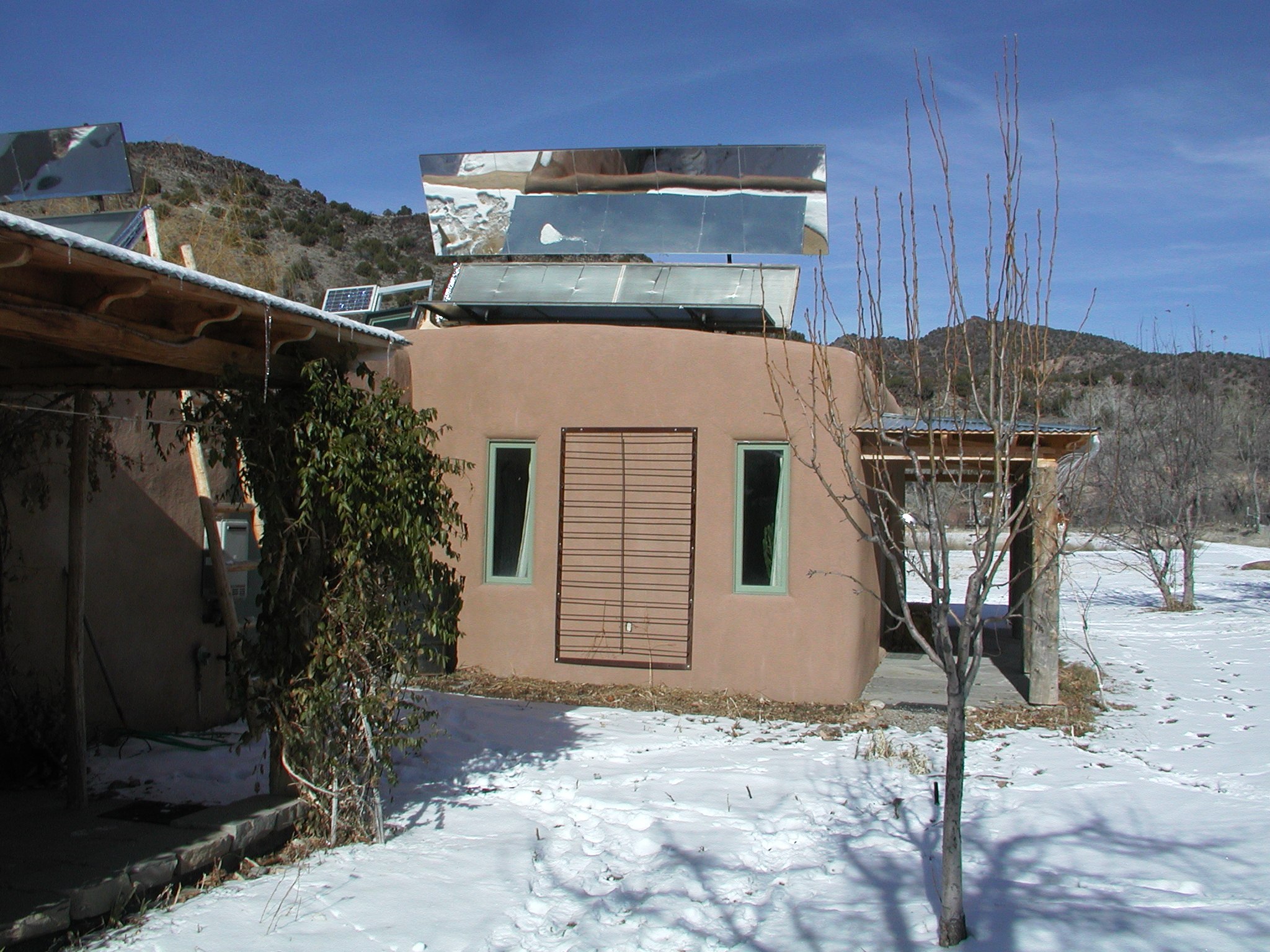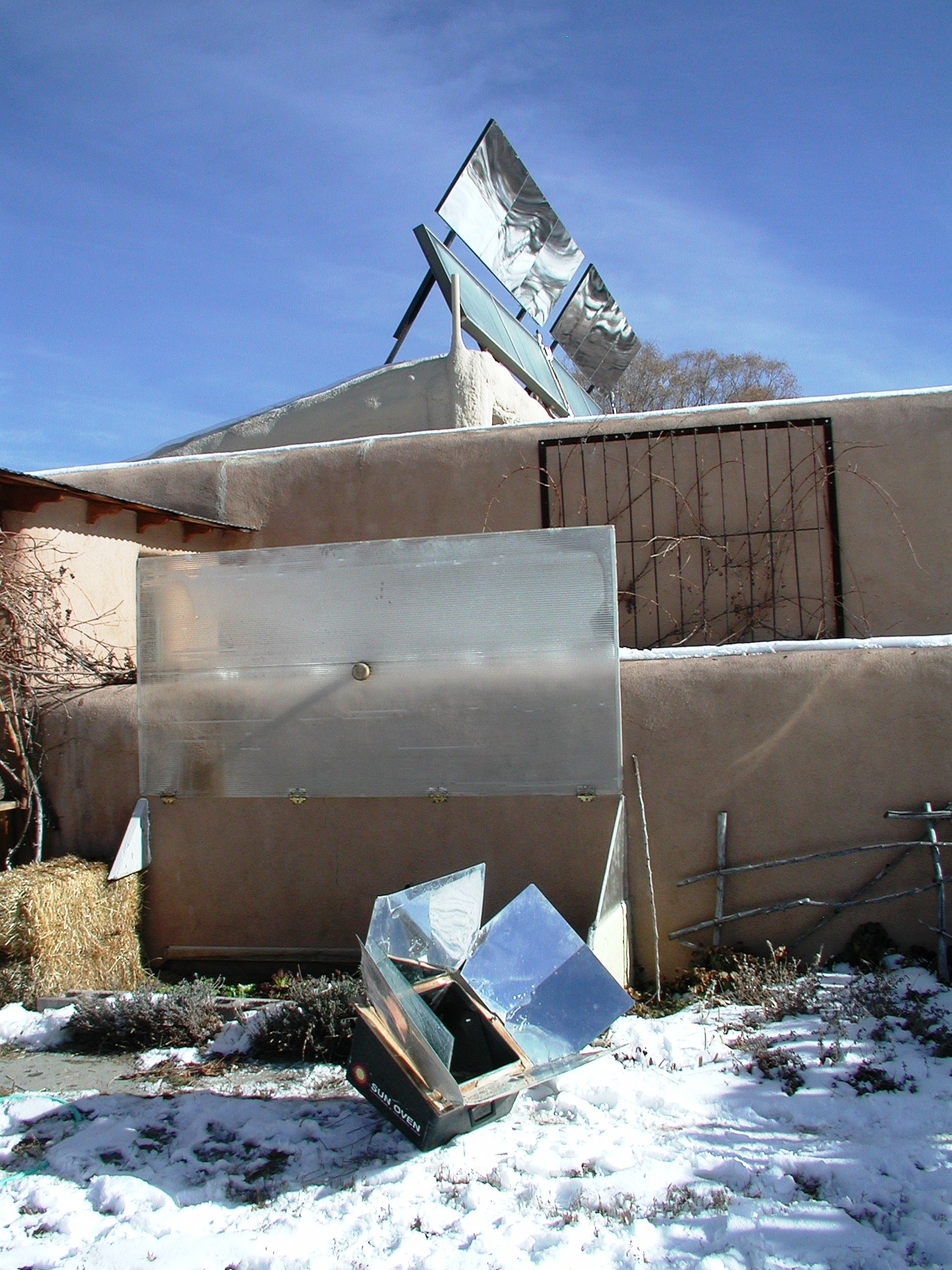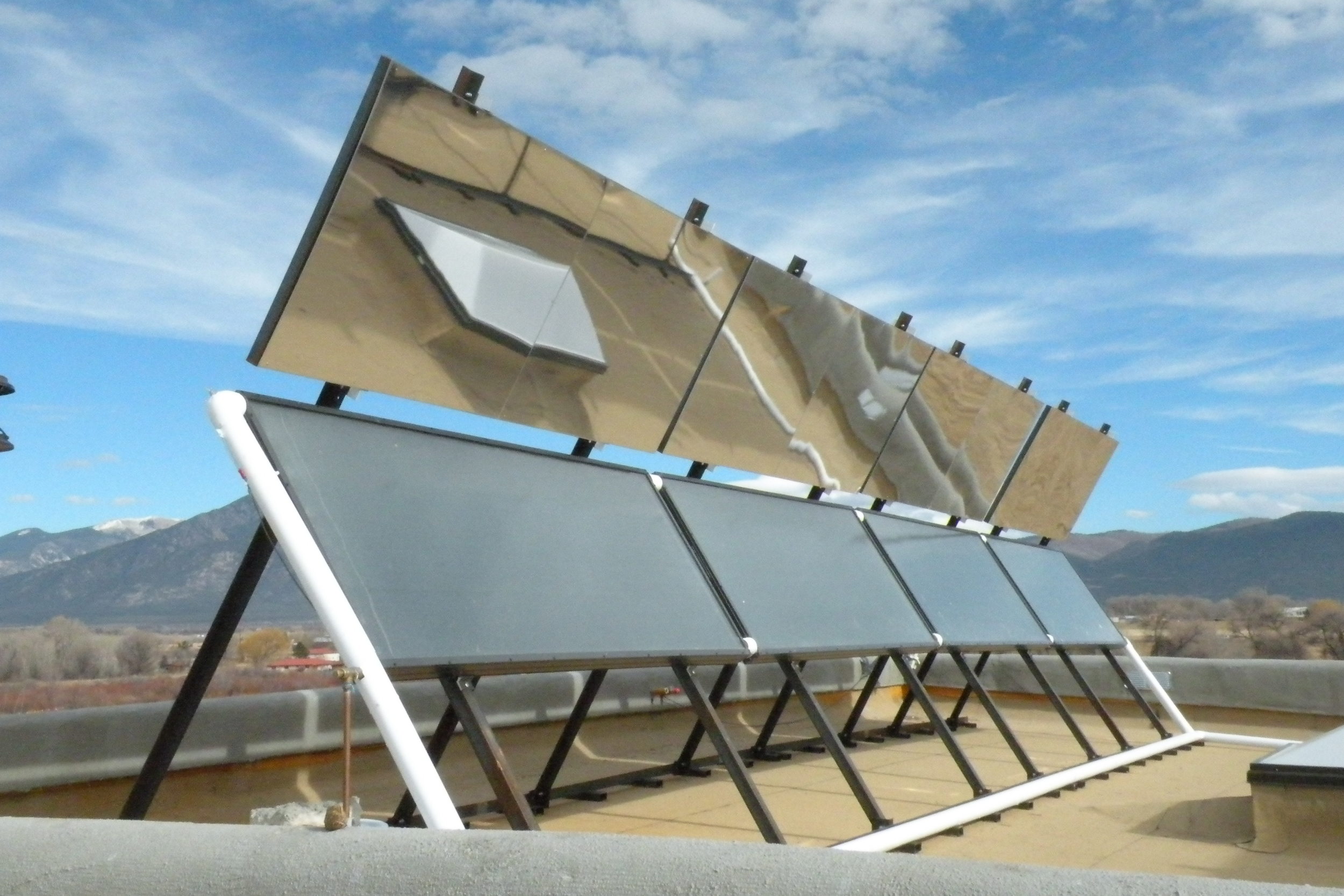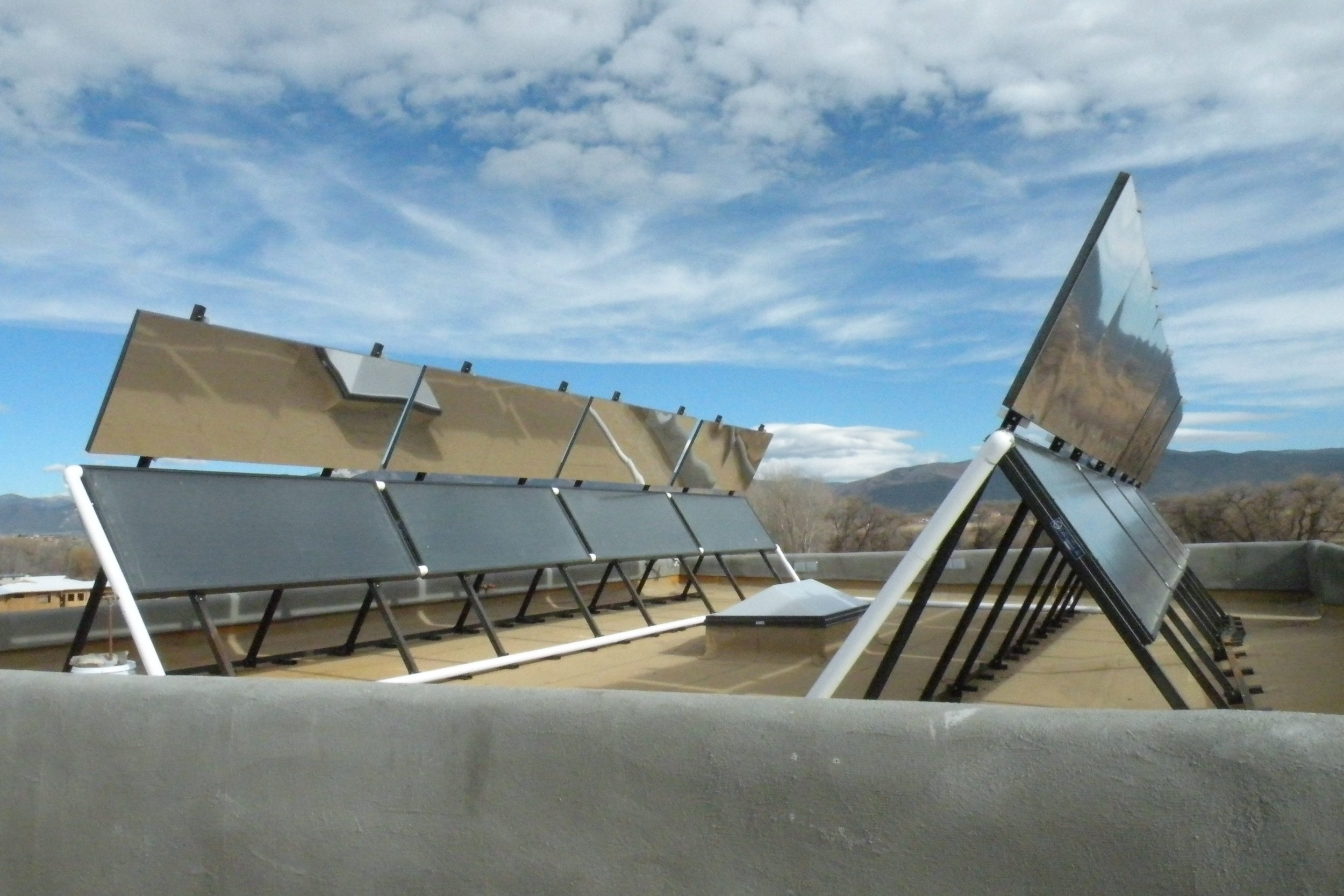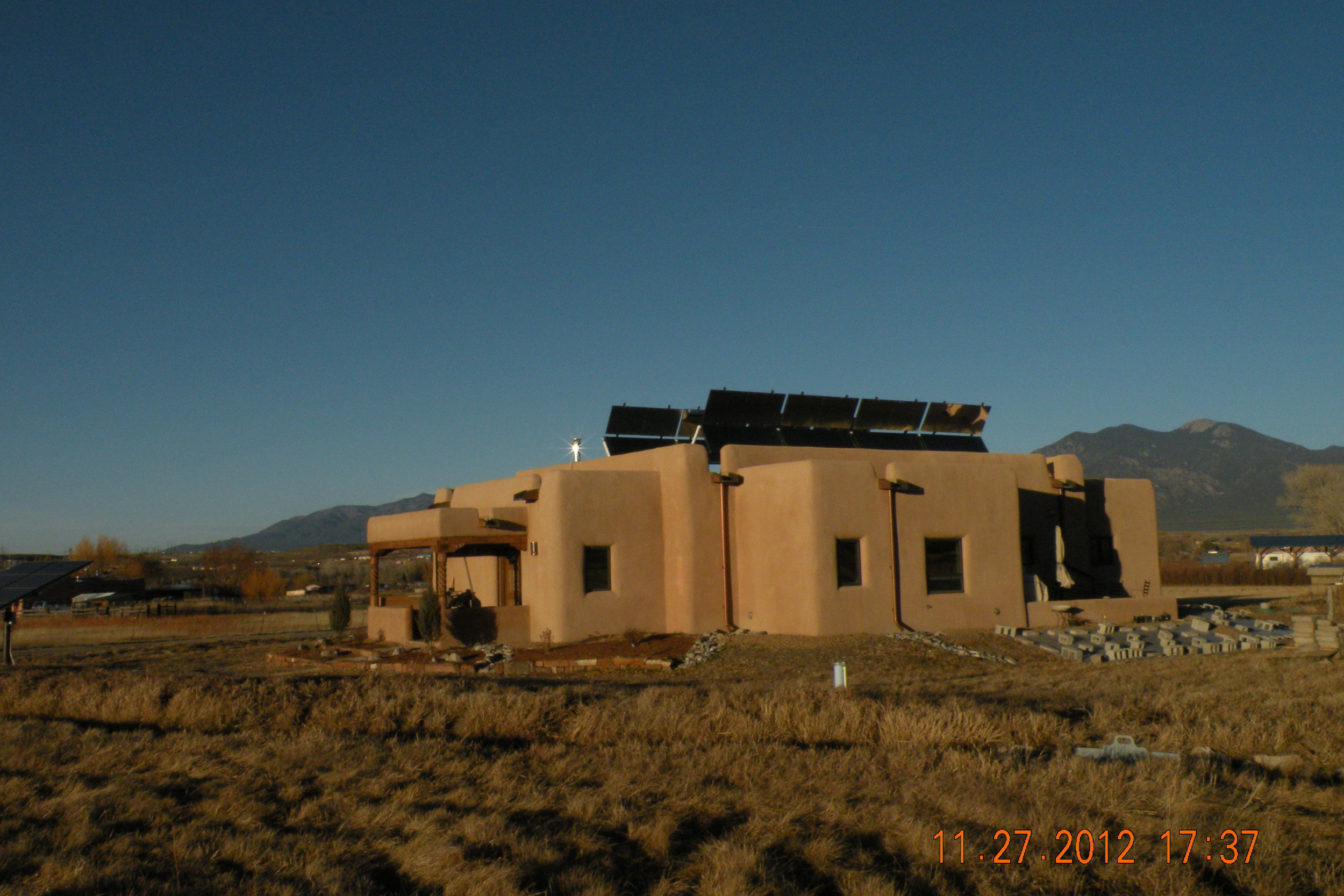Concentrating the suns energy with mirrors has been done in solar ovens for quite a while. I’ve adapted this technique to solar thermal home heating. One reason for this is cost. The mirrors typically costs half or less than the collectors per square foot. Thus by increasing the solar window (collection area) with mirrors the system can provide more power at a lower cost. Another reason is that this system more closely matches the yearly solar collection to the heating needs adding more heat in winter and less in summer. Reflective material specifically designed for this purpose is used in large parabolic concentrated solar electric plants. It is 94% efficient and can be applied to a variety of substrate.
This thermal application uses the same material but is applied to flat aluminum sheet. With computer modeling I’ve been able to minimize the building of prototypes while optimizing the appropriate size and angles.
The first one installed in December 2008 doubled the solar window and instantly doubled the heat coming out of the panel. The reflector is at a fixed angle above the collector, so as the sun gets higher in the sky, there is less additional heat added by the mirror. By mid April when less heat is needed for the house, there is no reflected sun on the panel and as the sun continues to get higher in the sky the shadow cast by the overhanging mirror begins to limit the amount of solar collection, until only enough heat is collected for domestic hot water in summer. There are three lines coming down from above on the computer simulation. They represent the sun angle at 10 am 11 am and noon. For many years I tilted the panels up at 70 degrees (At 37 deg latitude) to protect from summer overheating. This angle gives up some power even in winter, but I accepted this loss for simplicity. By pointing the panels higher they collect more energy and are protected from summer overheating by the shadow cast by mirror above.
By September the shadow is gone and the slab is ready to be charged. By mid October the reflector is powered up, and by mid winter the reflection covers the whole collector, effectively doubling the heat collected.
The original prototype has a reflector below and one above. An unforeseen problem occurs with this design. During the summer shading season the sun bounces off the bottom reflector onto the top one and a very bright reflection is projected forward that in many locations would be unacceptable, as it may shine in a neighbors window or….
For this reason I use only the overhead reflector in most applications. Patent pending.

